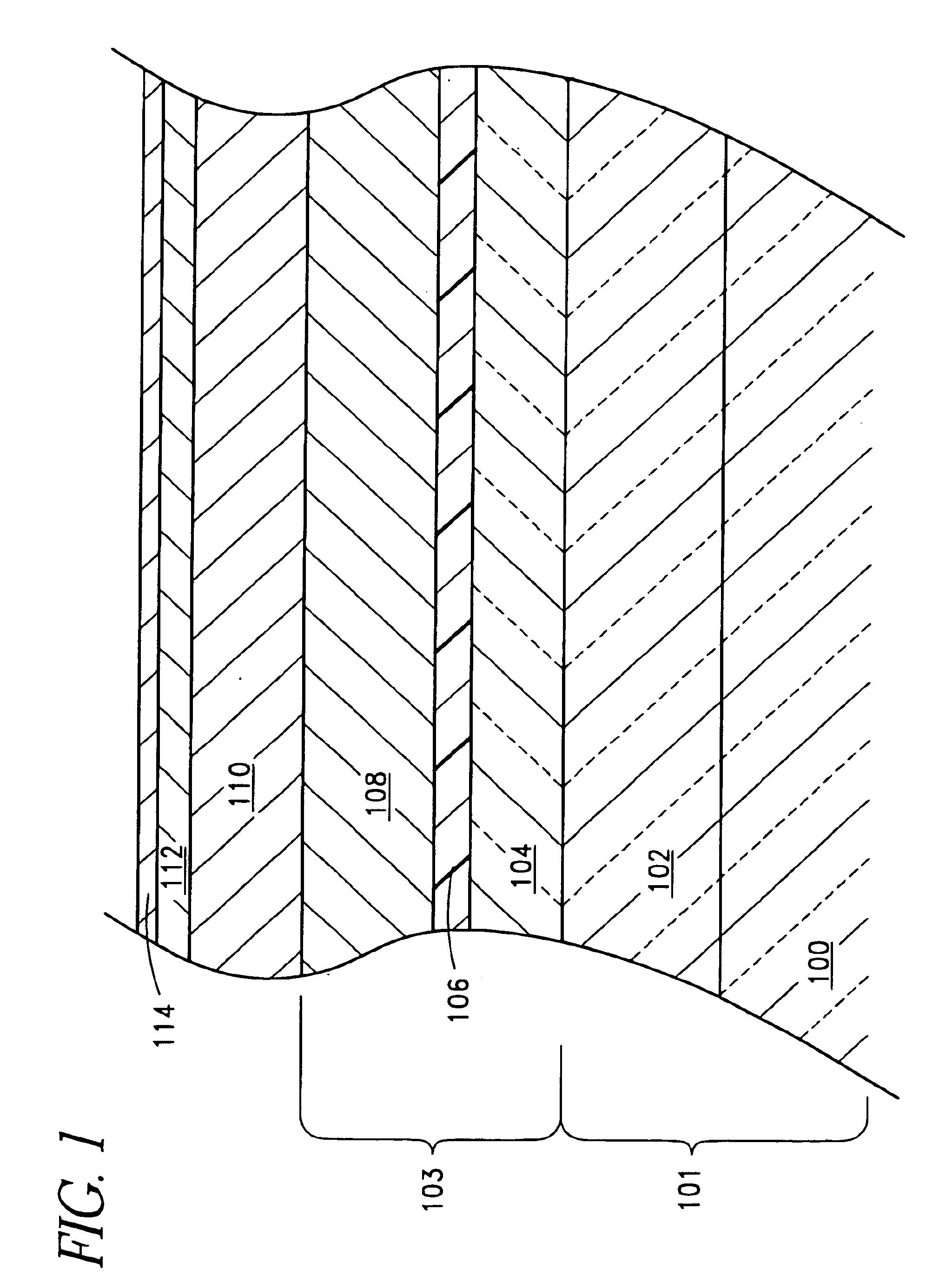Method of manufacture of programmable switching circuits and memory cells employing a glass layer
- Summary
- Abstract
- Description
- Claims
- Application Information
AI Technical Summary
Benefits of technology
Problems solved by technology
Method used
Image
Examples
Embodiment Construction
The preferred embodiment discloses a method of fabricating a programmable memory cell in a stud configuration. Blanket layers of electrode and body materials are deposited and subsequently patterned and etched, leaving pillars or studs as individual devices. The blanket deposition of the layers avoids problems associated with via filling and allows more flexibility in cell configuration.
With reference to FIG. 1, a cross section of deposited blanket layers is shown. A semiconductor base material 100 containing a heavily doped (e.g., n+) conductive region 102 comprises the substrate 101 upon which the memory cells are fabricated. In general, the substrate comprises the lowest layer of semiconductor material from which devices are formed in the integrated circuit. In the illustrated embodiments, the substrate comprises a single-crystal silicon wafer. In other arrangements, an epitaxial silicon layer or another semiconductor, such as a III-V material, can be used.
A bottom electrode 103 ...
PUM
| Property | Measurement | Unit |
|---|---|---|
| Width | aaaaa | aaaaa |
| Width | aaaaa | aaaaa |
| Wavelength | aaaaa | aaaaa |
Abstract
Description
Claims
Application Information
 Login to View More
Login to View More - R&D
- Intellectual Property
- Life Sciences
- Materials
- Tech Scout
- Unparalleled Data Quality
- Higher Quality Content
- 60% Fewer Hallucinations
Browse by: Latest US Patents, China's latest patents, Technical Efficacy Thesaurus, Application Domain, Technology Topic, Popular Technical Reports.
© 2025 PatSnap. All rights reserved.Legal|Privacy policy|Modern Slavery Act Transparency Statement|Sitemap|About US| Contact US: help@patsnap.com



